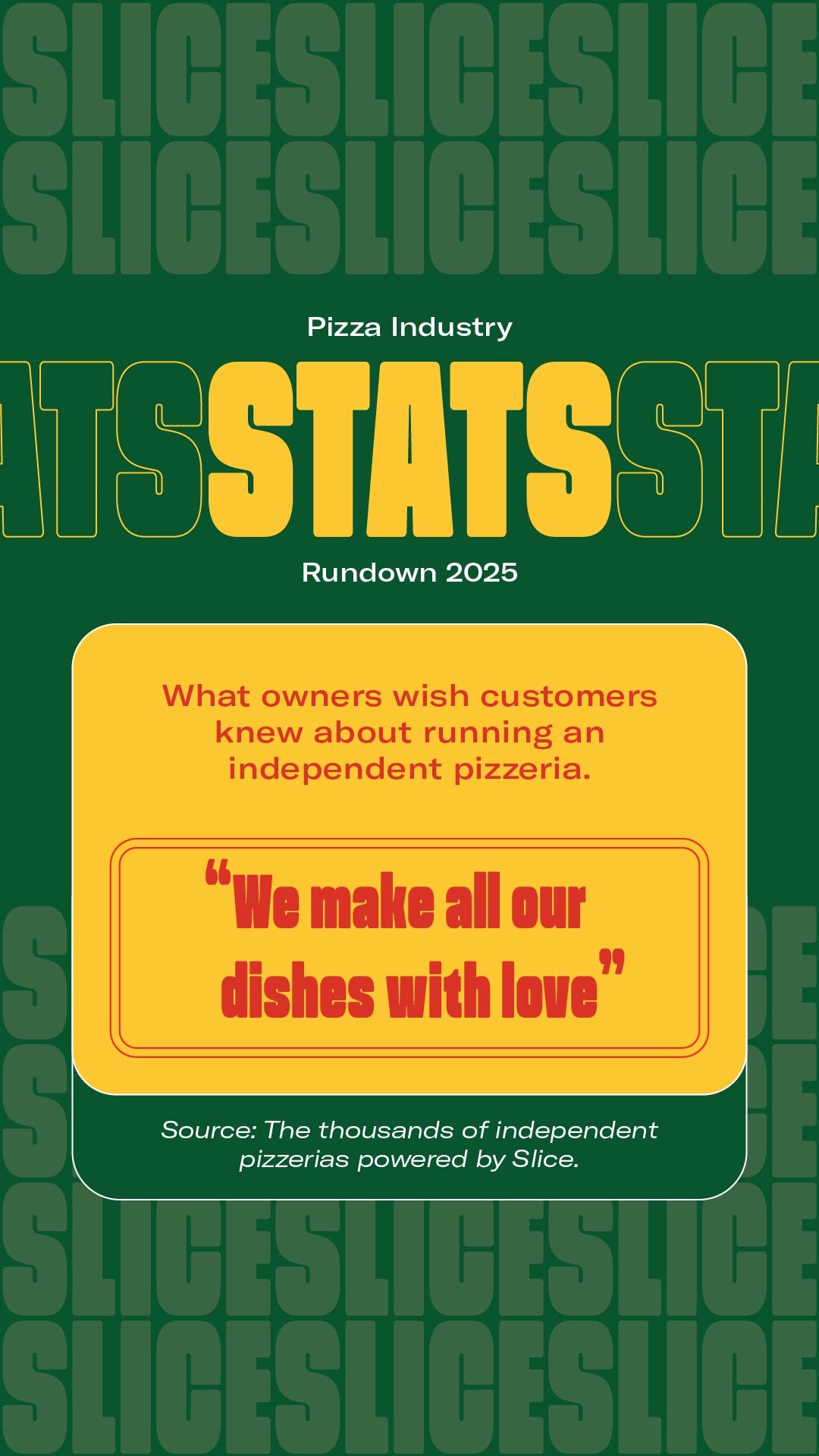National Pizza Day goes head-to-head with the Super Bowl on February 9th!
Ever wonder how your shop measures up to everyone else? We have you covered. Combing through the data of thousands of pizzerias Slice works with, we pulled together some fascinating stats about the independent pizza industry.
Click the pics for details!
Understanding data about your shop can be the difference between running profitably or not. Make use of tools such as our Owner’s App to get a real-time view into the health of your business. They’ll give you a clear sense of such core numbers as number of orders and average order size while also helping you better understand your customers.
If you’re working with Slice, reach out to your Account Manager get an overview of the dashboard.














































